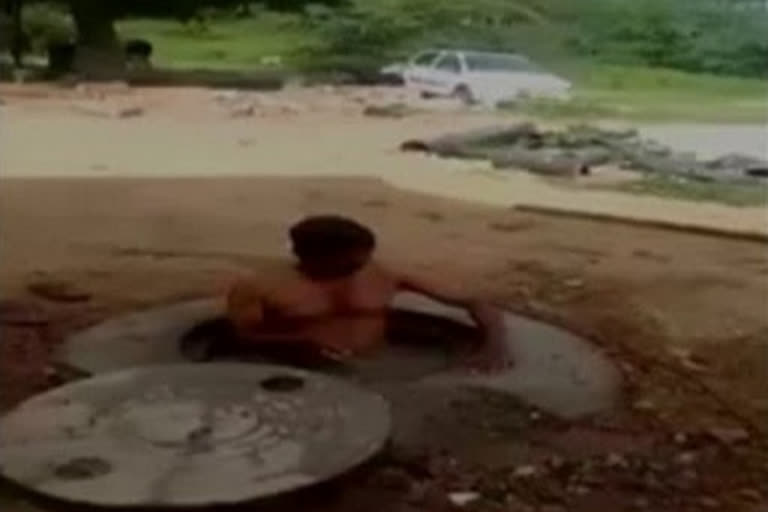New Delhi: “The very act of manually cleaning excreta is a degrading job, one that strips away a person’s humanity. There is nothing sacred about this work”, warned Dr Babasaheb Ambedkar, the architect of the Indian Constitution. He called for an immediate boycott of manual scavenging, saying Bhangi Jhadu Chodo (Leave the broom!).
He repudiated the notion of glorifying the vile profession. Decades have gone by but we still employ manual scavengers in India. Laws against manual scavenging have not proved adequate in abolishing it. In 2013, the Center drafted the Prohibition of Employment as Manual Scavengers and their Rehabilitation Act but it still remains to be implemented in full vigour. The government plans to introduce The Prohibition of Employment as Manual Scavengers and their Rehabilitation (Amendment) Bill 2020 in the Monsoon Session of Parliament.
At present, any person or agency employing a person for hazardous cleaning of sewers and septic tanks is punishable with imprisonment up to five years or a fine up to Rs five lakhs or both. The Center is considering harsher punishments in the new bill.
Oppressed sections of the society were charged with the task of cleaning human excreta. Despite changes in the toilet system, their living conditions have not changed. From generation to generation, they are being passed on the humiliating job of cleaning septic tanks, sewers and manholes. Hundreds of manual scavengers die every year in the process of cleaning excreta. In 2019 alone, 119 workers lost their lives. Between 2016 and 19, 282 sanitation workers across the country died while cleaning septic tanks and sewers. Safai Karmachari Andolan (SKA) alleged that these figures are the ones reported in the police stations and that the actual number is much higher.
Also read:TDP MLA switches over to ruling YSR Congress in Andhra
The National Commission for Safai Karamcharis (NCSK), a statutory body formed to look into the welfare of sanitation workers, revealed that 127 workers died cleaning septic tanks and manholes between January and August 2017. But according to the SKA estimates, 429 sanitation workers died during the same period in the National Capital Region alone.
In 1993 itself, the Center passed the Employment of Manual Scavengers and Construction of Dry Latrines (Prohibition) Act. But state governments completely ignored its existence. National Convenor of SKA and Raman Magsaysay Awardee Bezawada Wilson says that the 2013 Act also does not provide clear guidelines about the rehabilitation of sanitation workers. When the Act was first introduced, the government proposed abolishing manual scavenging and rehabilitating sanitation workers. The total cost of the project came to Rs 4,825 crore, which would have to be spent within nine months of enforcing the Act. Failure to allocate the said funds is a major reason for the Act’s failure.
According to a NITI Aayog survey, an estimated 54,130 people are working as sanitation workers across 18 states and 170 districts in the country. Union Minister Ramdas Athawale presented these figures in the Rajya Sabha session. But the ground-level activists claim that the actual number of workers could be in lakhs. The 2011 population census concluded that our country had 21 lakh dry latrines which needed manual cleaning.
The Ministry of Social Justice revealed that the number of sanitation workers increased from 5.88 lakhs in 1992 to 6.76 lakhs in 2002-03. In the following years, the number is estimated to have reached 8 lakhs.
The central government plans to modernize existing sewage systems and introduce mechanized sanitation activities. To this end, local organizations must be well prepared and citizens must be educated. This time, the amended Act must not only be stringent enough to put an end to this social hazard but also be implemented with an unyielding attitude.
